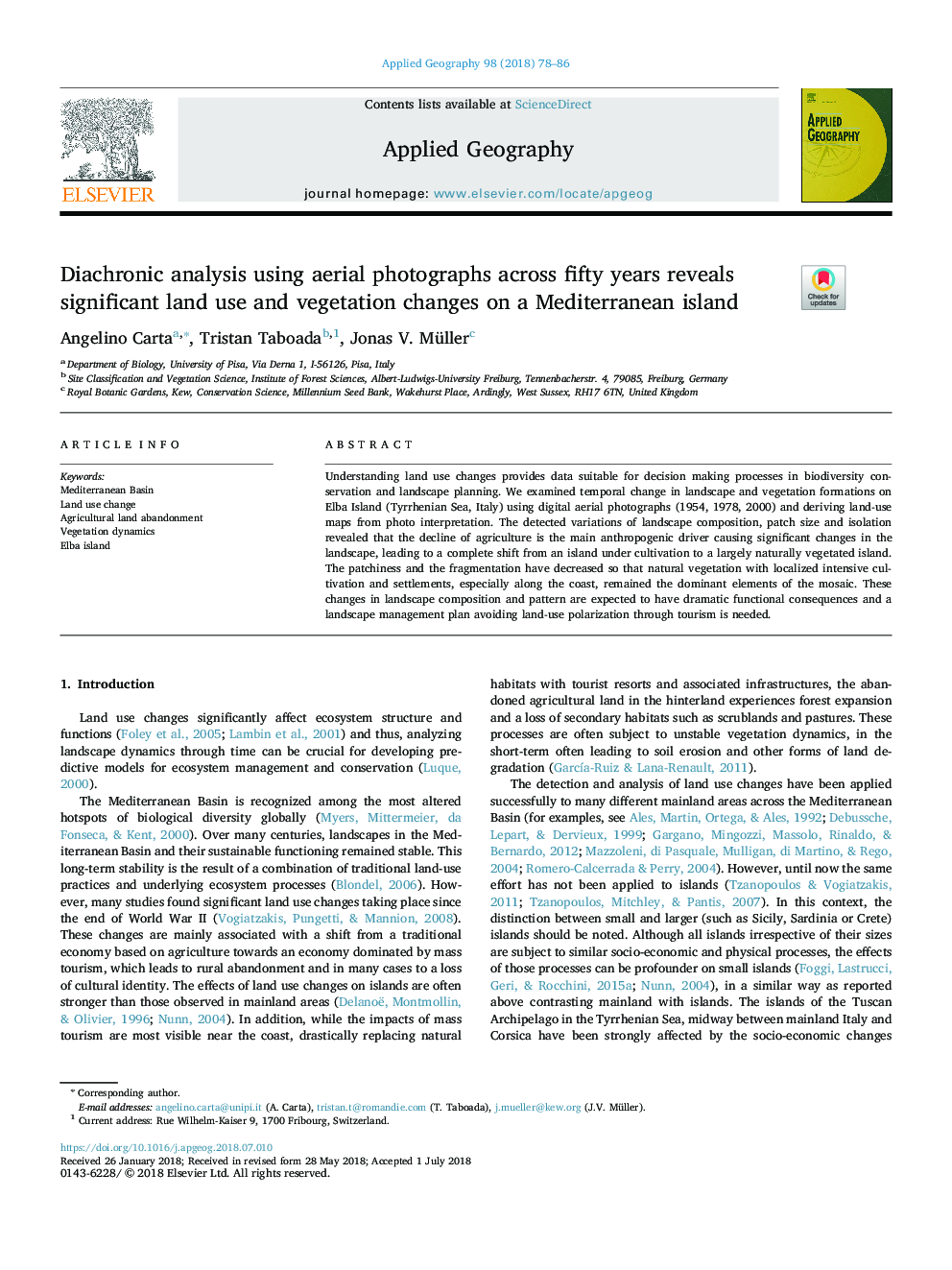| Article ID | Journal | Published Year | Pages | File Type |
|---|---|---|---|---|
| 6538206 | Applied Geography | 2018 | 9 Pages |
Abstract
Understanding land use changes provides data suitable for decision making processes in biodiversity conservation and landscape planning. We examined temporal change in landscape and vegetation formations on Elba Island (Tyrrhenian Sea, Italy) using digital aerial photographs (1954, 1978, 2000) and deriving land-use maps from photo interpretation. The detected variations of landscape composition, patch size and isolation revealed that the decline of agriculture is the main anthropogenic driver causing significant changes in the landscape, leading to a complete shift from an island under cultivation to a largely naturally vegetated island. The patchiness and the fragmentation have decreased so that natural vegetation with localized intensive cultivation and settlements, especially along the coast, remained the dominant elements of the mosaic. These changes in landscape composition and pattern are expected to have dramatic functional consequences and a landscape management plan avoiding land-use polarization through tourism is needed.
Keywords
Related Topics
Life Sciences
Agricultural and Biological Sciences
Forestry
Authors
Angelino Carta, Tristan Taboada, Jonas V. Müller,
